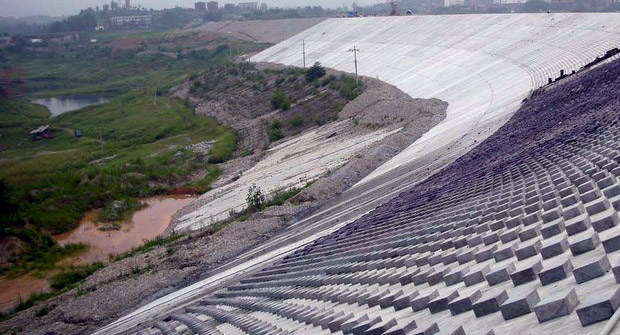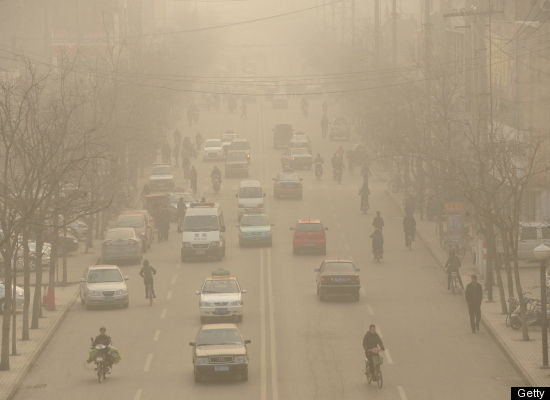Its Jam Band Friday – http://www.youtube.com/watch?v=3I1bBcda4Ko
:}
Why is that. Because the WHOLE world is polluted. Most of these places didn’t even make the last two lists.
http://www.thedailybeast.com/blogs-and-stories/2010-05-19/americas-28-most-polluted-places/
Our Most Polluted States
by The Daily Beast Info
 Greenpeace marine biologist Paul Horsman shows globs of oil on a jetti at the mouth of the Mississippi River on May 17, 2010. (John Moore / Getty Images) As the EPA and BP fight over the Gulf oil spill cleanup, the Daily Beast crunches the numbers and ranks the most contaminated sites in the nation.
Greenpeace marine biologist Paul Horsman shows globs of oil on a jetti at the mouth of the Mississippi River on May 17, 2010. (John Moore / Getty Images) As the EPA and BP fight over the Gulf oil spill cleanup, the Daily Beast crunches the numbers and ranks the most contaminated sites in the nation.
The BP oil rig explosion has led to untold millions in lost income for people who make their living from the Gulf, but toxic hazards are an everyday occurrence: The EPA estimates that there are 3,500 chemical spills each year, requiring $260 million to clean.
Above those, however, are the Superfund sites—places that have sustained major, long-term damage, necessitating years of cleanup. Established in 1980 after a series of toxic disasters, including the infamous Love Canal district of Niagara Falls, which turned the neighborhood into a virtual ghost town, Superfund has largely succeeded in centralizing hazardous waste cleanup and holding responsible parties financially accountable.
The BP fiasco—both a natural and human disaster—got us thinking: what are today’s most polluted toxic dumping grounds? To figure it out, we examined all available Superfund data from the Environmental Protection Agency. We filtered the results, focusing on sites that remain dangerous for human exposure and sites that have dangerous ground water. And then we ranked them using the following criteria:
· Toxicity per acre: The number of instances of each toxin, multiplied by the severity of each toxin, according to the Agency for Toxic Substances & Disease Registry, and divided by the acreage of the site.
· Toxicity per population: To determine potential human exposure we took the number of instances of each toxin, multiplied by the severity of each toxin, and divided by the population within one mile of the site. (The EPA gives a population range, and we used the higher number for this calculation.)
Since toxicity per acre is a more concrete statistic than potential human exposure (one can live near a toxic site and avoid contact), we weighted the former three times the impact of the latter. An important note: The human exposure element does not measure exposure levels, but rather indicates that the EPA believes there is a reasonable expectation that people may be exposed to contamination—exactly what the Superfund teams spend their time trying to alleviate.
:}
http://www.youtube.com/watch?v=2maAPVOZlkc&feature=fvw
:}
Acres: 2
Population: 10,000
Toxic chemicals: 34
History: From 1949 to 1991 Fletcher’s Paint Works operated a retail store and storage facility in this small New Hampshire town along the Souhegan River. In 1982 New Hampshire officials found leaking and open drums of paint chemicals in the storage area. Soil and groundwater around the site was later found contaminated with arsenic, lead, PCBs, and a slew of other nasty chemicals. The nearby Keyes Municipal Water Supply Well was shut down in the early 1980s after it was found contaminated by volatile organic compounds—gases emitted from paint and other household supplies. Cleanup began in 1988 and continues today. The EPA has tested homes in the area for gases seeping from soil into basements, with no health risks found in the homes and another round of testing due for June 2010. The main concern now is that fish in the Souhegan contain PCBs, and that the EPA has found evidence of people fishing in the river.
:}
http://www.youtube.com/watch?v=vtCJp1h45gA&feature=related
:}
#2, Haverford, Pennsylvania:
Havertown PCP
Acres: 15
Population: 50,000
Toxic chemicals: 59
History: Getting rid of toxic waste used to be so simple. National Wood Preservers, which treated wood on the site from 1947 to 1963, would take their liquid waste lined with pentachlorophenols (PCPs) to a well, and dump it down. Or they would toss the PCP-laden liquid onto the ground. A nearby stream was contaminated, though residents living within a mile of the site don’t use it for drinking water. In 1992 the EPA removed 97,000 tons of liquid waste, and 60 tons of sludge from the site. The EPA is armed with $4.2 million from the Recovery Act to finish the final cleanup phase, which includes removing contaminated soil from residential property and public spaces.
:}
There is 2. For the rest read the article. HAPPY LABOR DAY everyone. More next week.
http://www.youtube.com/watch?v=VX0cMoOiIMQ&feature=related
:}









 MetalRoofing.com is an online metal roofing information resource provided to homeowners and metal roofing contractors and manufacturers by The Metal Roofing Alliance. The Metal Roofing Alliance is committed to protecting your privacy.
MetalRoofing.com is an online metal roofing information resource provided to homeowners and metal roofing contractors and manufacturers by The Metal Roofing Alliance. The Metal Roofing Alliance is committed to protecting your privacy.
 For the past decade we have been telling homeowners and contractors about the many benefits of residential metal roofs. Now, we’re turning the tables, and asking you to tell us why you chose metal in our “Tell Us Your Metal Roofing Story” Facebook contest.
For the past decade we have been telling homeowners and contractors about the many benefits of residential metal roofs. Now, we’re turning the tables, and asking you to tell us why you chose metal in our “Tell Us Your Metal Roofing Story” Facebook contest.


 Greenpeace marine biologist Paul Horsman shows globs of oil on a jetti at the mouth of the Mississippi River on May 17, 2010. (John Moore / Getty Images) As the EPA and BP fight over the Gulf oil spill cleanup, the Daily Beast crunches the numbers and ranks the most contaminated sites in the nation.
Greenpeace marine biologist Paul Horsman shows globs of oil on a jetti at the mouth of the Mississippi River on May 17, 2010. (John Moore / Getty Images) As the EPA and BP fight over the Gulf oil spill cleanup, the Daily Beast crunches the numbers and ranks the most contaminated sites in the nation.












